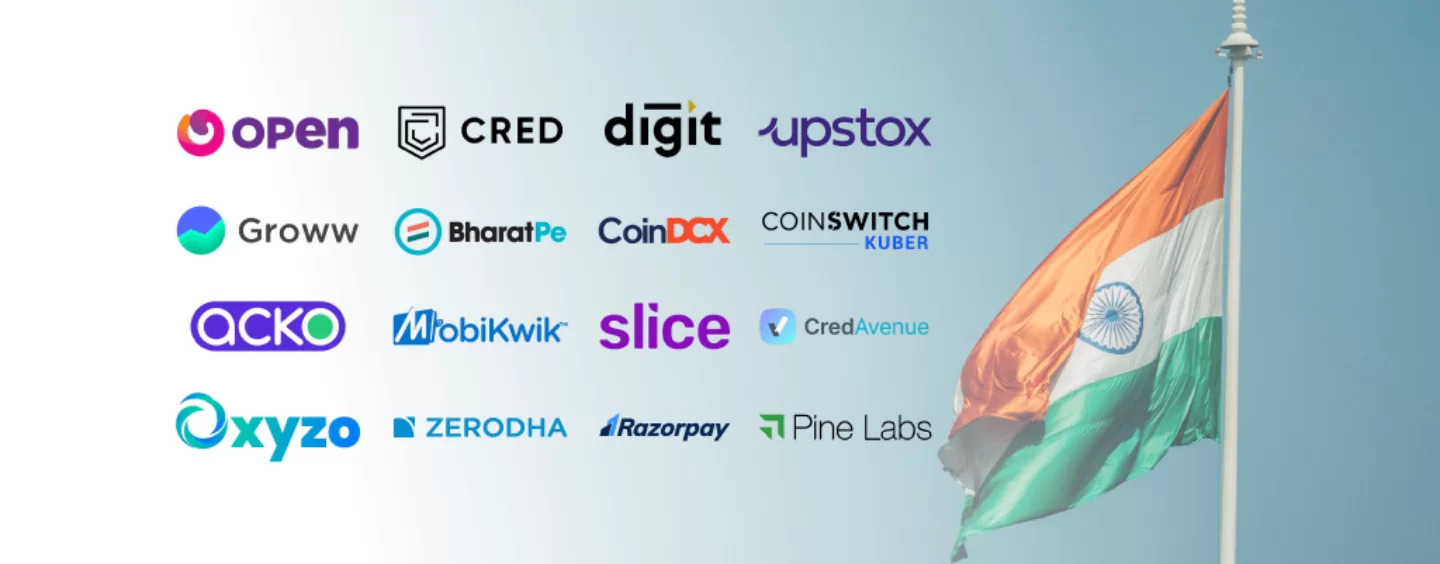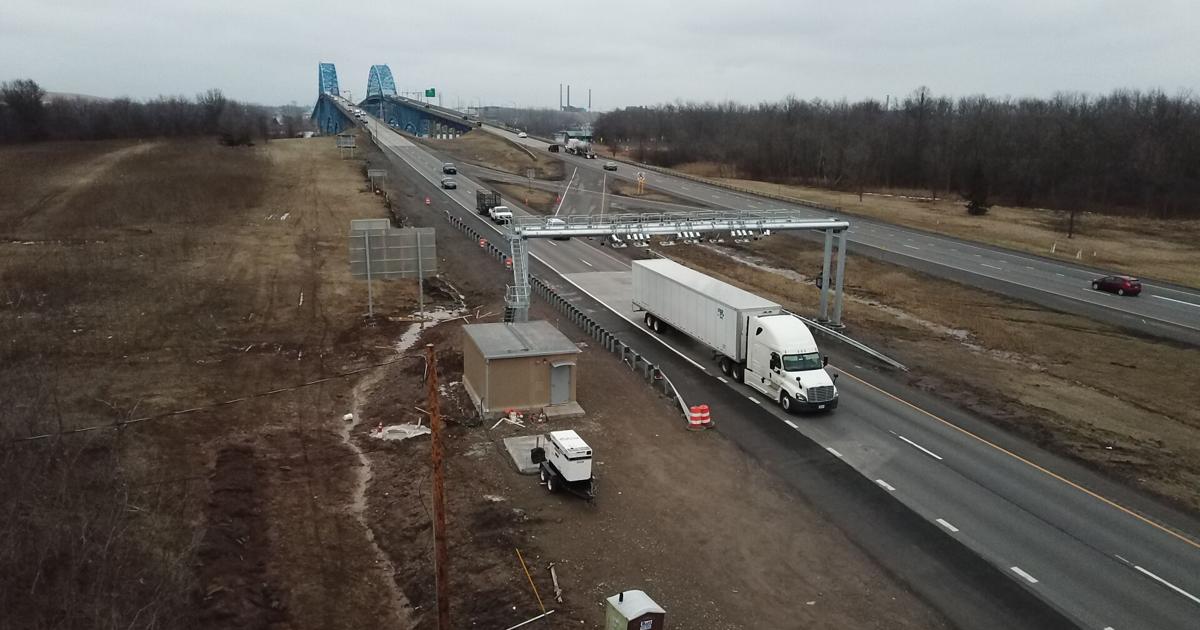Introduction
As technology continues to advance at an unprecedented pace, societies around the world are gradually moving towards a cashless economy. With the proliferation of digital payment methods and the increasing reliance on electronic transactions, the concept of a cashless society is no longer a distant possibility. In the Indian context, the vision of a cashless India has gained significant traction in recent years, spearheaded by government initiatives and the growing adoption of digital payment platforms.
A cashless economy refers to an economic system where the use of physical cash is minimized, and most transactions are conducted electronically. It involves the shift from tangible currency to digital forms of payments such as credit cards, mobile wallets, internet banking, and payment gateways. The overarching goal in moving towards a cashless society is to create a more efficient, transparent, and secure financial ecosystem.
There are various benefits associated with transitioning to a cashless economy in India. Firstly, it promotes financial inclusion by providing easier access to banking services for individuals who may not have traditional bank accounts. Digital payment platforms offer avenues for the unbanked population to participate in the formal economy, thus reducing the prevalence of cash-based transactions.
Secondly, a cashless economy offers enhanced convenience and ease of use. With just a few taps on a smartphone or the swipe of a card, individuals can make quick and seamless transactions, eliminating the need to carry physical cash or search for ATMs.
Furthermore, a cashless system can significantly reduce the risk and cost associated with handling physical currency. Cash handling often involves security concerns, such as theft and counterfeiting, which can be mitigated when transactions are conducted electronically. Additionally, the production, circulation, and disposal of paper currency incur substantial costs for the government, which can be minimized in a cashless economy.
Despite the numerous benefits, transitioning to a cashless India also presents several challenges. One of the major obstacles is the digital divide, which refers to the gaps in digital literacy and access to technology. Many sections of the population, particularly in rural areas, still lack the necessary infrastructure and knowledge to engage in digital transactions. Addressing this issue requires focused efforts to bridge the digital divide and educate the masses about the benefits and usage of digital payment platforms.
In the following sections, we will explore the steps taken towards achieving a cashless India, including promoting digital payments and e-wallets, encouraging financial inclusion, strengthening cybersecurity measures, enhancing digital infrastructure, and educating the masses about digital transactions. These measures, coupled with government initiatives, are crucial in transforming India into a cashless economy.
What is a cashless economy?
A cashless economy refers to a system where physical cash is eliminated or minimized in favor of digital forms of payment. In a cashless economy, transactions are conducted electronically through various digital platforms such as credit cards, mobile wallets, internet banking, and payment gateways.
The concept of a cashless economy is based on the belief that digital transactions offer numerous advantages over traditional cash-based transactions. As technology advancements continue to reshape the financial industry, the move towards a cashless society has gained momentum worldwide.
One of the main characteristics of a cashless economy is the reliance on electronic modes of payment. Instead of using physical currency, individuals can conduct transactions seamlessly by using their smartphones, tablets, or other electronic devices. Payments can be made through mobile payment apps, where the user links their bank account or debit/credit card to their smartphone.
Another aspect of a cashless economy is the use of digital wallets or electronic purses. These wallets are virtual accounts where individuals can store their money digitally. Users can load money into their digital wallets and then make payments at various merchants or online platforms using the funds stored in their wallet. Digital wallets are convenient, secure, and often offer additional features and benefits such as cashback rewards or loyalty points.
In a cashless economy, electronic payment methods are widely accepted by businesses and merchants. Point-of-sale (POS) systems equipped with card readers or contactless payment options are prevalent, enabling customers to make payments easily using credit or debit cards. Additionally, online shopping and e-commerce platforms facilitate cashless transactions, allowing customers to make purchases with just a few clicks.
The benefits of a cashless economy are numerous. Firstly, electronic transactions offer enhanced convenience and speed. With just a few taps or swipes, payments can be made instantly, eliminating the need for carrying physical cash or searching for ATMs.
Secondly, a cashless economy promotes financial transparency and accountability. Electronic transactions leave behind a digital trail, making it easier to track and trace financial activities. This reduces the risks associated with illegal activities such as money laundering, tax evasion, and corruption.
Furthermore, a cashless economy reduces the costs and risks associated with handling physical cash. Cash management involves security concerns such as theft, counterfeit currency, and the need for physical infrastructure such as bank branches and ATMs. By minimizing the reliance on cash, these costs and risks can be significantly reduced.
It is important to note that while the transition towards a cashless economy brings numerous benefits, there are also challenges that need to be addressed. For instance, certain sections of the population, particularly in rural areas, may face difficulties in accessing digital infrastructure and understanding digital payment methods. The digital divide needs to be bridged to ensure that everyone can participate in a cashless economy.
In the next sections, we will explore the benefits of a cashless economy, the challenges in implementing it, and the steps taken towards achieving a cashless India.
Benefits of a cashless economy
A cashless economy offers numerous advantages, both to individuals and the overall financial ecosystem. Let’s explore some of the key benefits:
- Convenience and Efficiency: One of the primary benefits of a cashless economy is the convenience it offers. With digital payment methods, individuals can make transactions anytime, anywhere, with just a few taps or swipes on their smartphone or card. This eliminates the need to carry physical cash or search for ATMs, making transactions faster and more efficient.
- Financial Transparency: Electronic transactions leave a digital trail, which enhances financial transparency. This makes it easier to track and monitor financial activities, reducing the risks of illegal activities such as money laundering and tax evasion. Governments and financial institutions can utilize this digital data to better understand economic trends and make informed policy decisions.
- Reduced Risk and Costs: Handling physical cash involves several risks, such as theft, counterfeit currency, and the need for secure storage. In a cashless economy, these risks can be significantly reduced. Additionally, the costs associated with printing, distributing, and managing physical currency can be minimized, resulting in cost savings for both the government and financial institutions.
- Financial Inclusion: A cashless economy promotes financial inclusion by providing easier access to banking services for individuals who may not have traditional bank accounts. Digital payment platforms offer avenues for the unbanked population to participate in the formal economy. This enables them to receive salaries, make payments, and access financial services more easily.
- Improved Security: Compared to physical cash, digital payment methods offer enhanced security. Biometric authentication, encryption, and two-factor authentication provide robust security measures, reducing the risk of fraud and identity theft. Additionally, in case of loss or theft, digital wallets and card providers offer quick and efficient ways to block or recover funds.
- Boost to the Digital Economy: A cashless economy spurs the growth of the digital economy. By promoting digital transactions, it encourages the use of e-commerce platforms and online marketplaces. This leads to increased business opportunities, job creation, and innovation in the digital space.
- Environmental Sustainability: The transition to a cashless economy can have positive environmental impacts. With fewer physical transactions, there is less demand for paper currency, resulting in reduced deforestation and carbon emissions related to printing and transporting cash.
These benefits highlight the transformative potential of a cashless economy. However, it is essential to address the challenges and ensure that the transition is inclusive and well-managed. In the following sections, we will discuss the obstacles in implementing a cashless economy and the steps taken towards achieving a cashless India.
Challenges in implementing a cashless economy
While a cashless economy offers a multitude of benefits, there are several challenges that need to be addressed for its successful implementation. These challenges include:
- Digital Divide: One of the main obstacles in transitioning to a cashless economy is the digital divide. Many individuals, particularly in rural areas, lack access to digital infrastructure and have limited knowledge about digital payment methods. Bridging this gap is crucial to ensure that everyone can participate in and benefit from a cashless economy.
- Security Concerns: As electronic transactions become more prevalent, the risk of security breaches and fraud increases. Cybersecurity measures need to be robust to protect individuals and businesses from potential threats. Building trust and confidence in the security of digital payment systems is essential for the success of a cashless economy.
- Dependency on Technology: In a cashless economy, reliance on technology is paramount. However, technical issues such as connectivity problems, system failures, or power outages can disrupt the functioning of digital payment platforms. Ensuring reliable and uninterrupted access to technology infrastructure is crucial to overcome such challenges.
- Cultural and Behavioral Shift: Transitioning from a cash-based to a cashless economy requires a significant cultural and behavioral shift. People may be accustomed to the familiarity and tangibility of physical cash, making it challenging to fully embrace digital transactions. Educating and familiarizing individuals with the benefits and usage of digital payment methods is essential to drive adoption.
- Data Privacy Concerns: Digital transactions involve the exchange of personal and financial information. Safeguarding customer data and ensuring privacy rights are protected are crucial considerations in a cashless economy. Effective data protection regulations and measures need to be in place to address these concerns.
- Infrastructure Readiness: Building a robust digital infrastructure is vital for the successful implementation of a cashless economy. This includes reliable internet connectivity, secure payment gateways, and a widespread network of point-of-sale (POS) systems. Investments in digital infrastructure are necessary to overcome the infrastructure gaps that may hinder the progress towards a cashless society.
Addressing these challenges requires a comprehensive approach involving government initiatives, public-private partnerships, and widespread awareness campaigns. It is crucial to ensure that the transition to a cashless economy is inclusive, secure, and beneficial for all sections of society.
In the next sections, we will explore the steps taken towards achieving a cashless India, including promoting digital payments and e-wallets, encouraging financial inclusion, strengthening cybersecurity measures, enhancing digital infrastructure, and educating the masses about digital transactions.
Steps towards achieving a cashless India
The journey towards a cashless India involves several strategic steps aimed at promoting digital transactions, fostering financial inclusion, strengthening cybersecurity, enhancing digital infrastructure, and educating the masses about the benefits of digital transactions. Let’s explore these steps:
- Promoting Digital Payments and E-Wallets: The government, in collaboration with financial institutions and technology providers, has undertaken various initiatives to promote digital payments. This includes supporting the development and adoption of mobile wallet apps, facilitating interoperability between different payment platforms, and offering incentives such as cashback rewards to encourage digital transactions.
- Encouraging Financial Inclusion: To ensure that no one is left behind in the transition to a cashless economy, efforts are being made to promote financial inclusion. This includes initiatives to open bank accounts for the unbanked population, providing basic banking services through mobile banking and payment agents, and offering affordable and accessible financial products tailored to the needs of underserved communities.
- Strengthening Cybersecurity Measures: As digital transactions increase, cybersecurity becomes a critical concern. The government and regulatory bodies are working towards strengthening cybersecurity measures to protect individuals and businesses from potential threats. This includes implementing robust data protection regulations, promoting secure authentication methods, and educating users about safe digital practices.
- Enhancing Digital Infrastructure: Building a robust digital infrastructure is essential for the widespread adoption of digital transactions. Efforts are being made to improve internet connectivity, expand the network of point-of-sale (POS) systems, and upgrade payment gateways to ensure seamless and reliable digital transactions across the country. Investments are also being made in developing smart cities and digital hubs to support the growth of a cashless economy.
- Educating the Masses about Digital Transactions: A key aspect of driving the adoption of digital transactions is spreading awareness and educating the masses about the benefits and usage of digital payment methods. The government and financial institutions are conducting widespread campaigns and workshops to familiarize individuals with digital payment platforms, address common concerns, and promote a cashless mindset.
These steps, supported by government initiatives such as Digital India, Jan Dhan Yojana, and Aadhaar-based authentication, have played a significant role in advancing India’s journey towards a cashless economy. The concerted efforts of various stakeholders are paving the way for a technologically-driven financial ecosystem that is efficient, transparent, and accessible to all.
In the following sections, we will discuss the importance of government initiatives in a cashless India and conclude with a summary of the key points discussed throughout the article.
Promoting Digital Payments and E-Wallets
One of the key steps towards achieving a cashless India is the promotion of digital payments and the widespread adoption of e-wallets. This strategic approach involves initiatives by the government, financial institutions, and technology providers to facilitate the transition from cash-based transactions to digital platforms. Let’s explore how promoting digital payments and e-wallets is driving India’s journey towards a cashless economy:
The government has launched several initiatives to encourage digital payments and create a favorable ecosystem for e-wallets. One such initiative is the Unified Payments Interface (UPI), which enables instant fund transfers between individuals and merchants through mobile apps. This has revolutionized peer-to-peer payments and facilitated seamless transactions across various e-wallets.
Furthermore, the Pradhan Mantri Jan Dhan Yojana (PMJDY) has played a significant role in enhancing financial inclusion by ensuring that every household has access to a bank account. This has provided a foundation for individuals to engage in digital transactions using their bank accounts and has contributed to the adoption of e-wallets.
Financial institutions and e-wallet providers have also played a crucial role in promoting digital payments. They have launched user-friendly mobile wallet applications that cater to a wide range of consumer needs. These applications offer features such as quick money transfers, online bill payments, and seamless integration with various merchants and service providers.
Incentives have been introduced to encourage individuals and merchants to embrace digital payments. Cashback rewards, discounts, and promotions are being offered by e-wallet providers and government-backed schemes to entice users. These incentives have proven to be effective in shifting consumer behavior towards digital transactions.
Merchant acceptance of digital payments has also witnessed remarkable growth. Point-of-sale (POS) systems that enable card payments and digital wallet transactions are becoming increasingly ubiquitous across retail outlets, restaurants, and other establishments. Government initiatives such as the Bharat QR Code have standardized and simplified the acceptance process, making it easier for businesses to seamlessly incorporate digital payment options.
Moreover, public awareness campaigns and educational programs have been conducted to inform the masses about the benefits and functionalities of digital payment methods. These initiatives address concerns, clarify doubts, and educate individuals about the security measures in place to safeguard their transactions.
The promotion of digital payments and e-wallets has not only increased the convenience and efficiency of financial transactions but has also boosted the digital ecosystem. Small businesses and individuals have found new avenues for growth through online marketplaces and e-commerce platforms. This has contributed to the overall economic development of the country.
Although significant progress has been made in promoting digital payments and e-wallets, there is still a need to address challenges such as digital literacy and infrastructure gaps. Ongoing efforts are required to bridge the digital divide and ensure that individuals from all walks of life can benefit from a cashless India.
In the upcoming sections, we will discuss other important aspects of achieving a cashless economy, including the importance of government initiatives, strengthening cybersecurity measures, enhancing digital infrastructure, and promoting financial inclusion.
Encouraging Financial Inclusion
One of the crucial steps towards achieving a cashless India is encouraging financial inclusion. Financial inclusion refers to providing access to affordable financial services to individuals who are currently excluded from the formal banking system. By promoting financial inclusion, a cashless economy can empower individuals, drive economic growth, and create a more inclusive society. Let’s delve into how efforts to encourage financial inclusion are shaping India’s journey towards a cashless economy:
The government’s Pradhan Mantri Jan Dhan Yojana (PMJDY) has been instrumental in boosting financial inclusion in India. Under this scheme, millions of bank accounts have been opened for individuals who previously had limited or no access to banking services. These accounts, coupled with the availability of mobile banking and other digital payment options, have played a significant role in enabling financial inclusion and laying the foundation for a cashless economy.
Mobile banking and digital wallets have emerged as powerful tools in promoting financial inclusion. With the penetration of smartphones and the availability of affordable data plans, individuals can access banking services through mobile applications. Mobile banking allows users to perform various financial transactions, such as fund transfers, bill payments, and balance inquiries, providing them with greater financial control and access to formal financial services.
E-wallets have also played a crucial role in promoting financial inclusion. These digital wallets allow individuals to store money digitally, make payments, and access a range of financial services. E-wallets provide a safe and convenient alternative to traditional banking for those who may not have easy access to brick-and-mortar bank branches. They offer a simplified experience, enabling individuals to transact digitally without the need for a traditional bank account.
The adoption of Aadhaar, India’s unique biometric identification system, has further facilitated financial inclusion. Aadhaar provides a means to establish identity and access various financial services, including opening bank accounts and availing government subsidies. By leveraging Aadhaar authentication, individuals can seamlessly participate in the digital ecosystem, making it easier for them to transition towards cashless transactions.
Initiatives have been undertaken to encourage the use of financial technology (fintech) and promote innovation in the financial sector. Fintech startups are leveraging technology to develop innovative solutions that cater to the specific needs of underserved communities. For instance, peer-to-peer lending platforms enable individuals and small businesses to access credit easily, while microfinance institutions are expanding their reach through digital channels, providing financial services to remote areas.
Educational programs and awareness campaigns play a crucial role in promoting financial inclusion. These initiatives focus on educating individuals about the benefits of being part of the formal financial system and provide guidance on the usage of digital payment platforms. Financial literacy programs empower individuals with the knowledge and skills required to make informed financial decisions and utilize digital payment methods effectively.
Encouraging financial inclusion is not just about providing access to financial services but also fostering a supportive ecosystem that accommodates the unique needs and preferences of different segments of the population. Efforts are being made to simplify and customize financial products, ensure affordability, and address language barriers to make digital transactions accessible to all.
By promoting financial inclusion, India is ensuring that all individuals have the opportunity to participate in and benefit from the advantages of a cashless economy. In the upcoming sections, we will explore the importance of strengthening cybersecurity measures, enhancing digital infrastructure, and educating the masses about digital transactions in the journey towards a cashless India.
Strengthening Cybersecurity Measures
In the digital era, where financial transactions are predominantly conducted electronically, strengthening cybersecurity measures is of paramount importance in the journey towards a cashless India. Cybersecurity refers to the practices and measures taken to protect computer systems, networks, and digital transactions from unauthorized access, data breaches, and other security threats. Let’s explore how efforts to enhance cybersecurity are shaping India’s transition to a cashless economy:
The exponential growth of digital transactions highlights the need to safeguard sensitive financial information. The government, in collaboration with regulatory bodies, financial institutions, and technology providers, has implemented various measures to strengthen cybersecurity in the financial sector. This includes the formulation of robust data protection regulations and guidelines, ensuring adherence to international standards, and continuous monitoring of cybersecurity practices.
One key measure in safeguarding digital transactions is the implementation of multi-factor authentication. This involves combining multiple authentication factors such as passwords, biometrics, and one-time passwords (OTP) to verify the identity of users. Multi-factor authentication adds an extra layer of security, making it challenging for unauthorized individuals to gain access to user accounts and carry out fraudulent transactions.
Another significant aspect of cybersecurity lies in promoting awareness among individuals and organizations. Educational campaigns and programs aim to educate users about cybersecurity best practices, such as creating strong passwords, avoiding suspicious links and attachments, and regularly updating software and applications. By equipping individuals with the knowledge to identify and mitigate potential risks, they become active participants in safeguarding their digital transactions.
Financial institutions and technology providers are continuously investing in research and development to enhance security features in digital payment platforms. This involves implementing encryption technologies, secure communication protocols, and fraud detection systems to protect user data and prevent unauthorized transactions. Regular security audits and vulnerability assessments are also conducted to identify and address any vulnerabilities in the system.
Collaboration between public and private sectors is crucial in combating cyber threats. The government, regulatory bodies, financial institutions, and technology companies work in tandem to share information, analyze emerging threats, and respond swiftly to cyber incidents. Establishing strong partnerships and information-sharing networks helps to enhance the overall cybersecurity posture and ensures a coordinated response to cyber threats.
Efforts are being made to establish a robust legal framework to address cybersecurity concerns. Legislation and regulations are enacted to govern data protection, data breaches, cybercrime, and other related issues. These legal frameworks provide a solid foundation for enforcing cybersecurity practices, holding individuals and organizations accountable for any breaches, and protecting individuals’ digital rights.
The importance of cyber hygiene cannot be overstated in a cashless economy. Regularly updating software, using secure Wi-Fi networks, and being cautious of phishing attempts are some fundamental practices that individuals and organizations must adopt to mitigate cybersecurity risks.
By strengthening cybersecurity measures, India aims to create a secure digital ecosystem that inspires trust and confidence in digital transactions. It is essential to continually adapt and evolve security practices to stay ahead of emerging threats and ensure the safe and seamless functioning of a cashless economy.
In the following sections, we will explore the importance of enhancing digital infrastructure, promoting financial inclusion, and educating the masses about digital transactions as integral steps in driving India towards a cashless economy.
Enhancing Digital Infrastructure
Enhancing digital infrastructure is a critical step in the journey towards a cashless India. Robust and reliable digital infrastructure provides the backbone for seamless digital transactions, ensuring accessibility, efficiency, and security. Let’s delve into how efforts to enhance digital infrastructure are shaping India’s transition to a cashless economy:
Internet connectivity is the foundation of a strong digital infrastructure. Efforts have been made to expand internet reach across the country, particularly in rural areas, to bridge the digital divide. Initiatives such as the BharatNet project aim to connect all panchayats (village-level local governments) with high-speed internet, enabling individuals in remote areas to access digital payment platforms and participate in a cashless economy.
Additionally, the government’s Digital India initiative plays a vital role in enhancing digital infrastructure. The initiative focuses on creating digital infrastructure, providing digital services, and promoting digital literacy. It encompasses various programs and schemes, including the National Optical Fiber Network, Common Service Centers (CSCs), and the National Knowledge Network, which collectively contribute to creating a robust digital ecosystem.
To support digital transactions, an extensive network of point-of-sale (POS) systems and card acceptance infrastructure has been established. From retail outlets to small businesses, the deployment of card readers and contactless payment options has become widespread. The government’s Bharat QR Code initiative has further standardized and simplified the acceptance process, making it easier for businesses to adopt digital payment methods.
Financial institutions play a pivotal role in enhancing digital infrastructure. Banking services are being made more accessible through mobile banking applications, internet banking portals, and interactive voice response (IVR) systems. These services allow individuals to manage their finances and make digital transactions on-the-go, reducing the reliance on physical bank branches and improving overall convenience.
The government and financial institutions are continuously investing in upgrading payment gateways to ensure secure and efficient digital transactions. Encrypted communication protocols, secure sockets layer (SSL) certificates, and secure payment gateways serve as defense mechanisms against cyber threats. This enhances the security and trustworthiness of digital payment platforms, providing users with a seamless and protected transaction experience.
Efforts are also being made to develop smart cities and digital hubs, creating an environment that is conducive to the growth of a cashless economy. Smart cities leverage advanced technologies such as Internet of Things (IoT) devices, sensors, and data analytics to enhance urban living and facilitate digital transactions. Digital hubs provide dedicated spaces for technology startups, fostering innovation in the digital payment sector.
To keep pace with advancements in technology, continuous investment in research and development is essential. This includes exploring emerging technologies such as blockchain, Artificial Intelligence (AI), and machine learning to further enhance the security and efficiency of digital transactions. By embracing these technological advancements, India can continue to stay at the forefront of the cashless revolution.
Enhancing digital infrastructure is a dynamic process that requires collaboration between the government, regulators, financial institutions, technology providers, and telecom companies. By continually investing in digital infrastructure, India can create an ecosystem that supports and encourages the widespread adoption of digital transactions, driving the nation closer to a truly cashless economy.
In the following sections, we will explore the importance of promoting financial inclusion, educating the masses about digital transactions, and the role of government initiatives in achieving a cashless India.
Educating the Masses about Digital Transactions
Educating the masses about digital transactions is a crucial step in the journey towards a cashless India. It is essential to familiarize individuals with digital payment methods, build awareness about the benefits of transitioning to a cashless economy, and address any concerns or misconceptions they may have. Let’s explore how efforts to educate the masses about digital transactions are shaping India’s transition to a cashless economy:
Public awareness campaigns have been launched to promote the adoption of digital payment methods. These campaigns utilize various communication channels, including television, radio, print media, and social media, to reach a wide audience. The focus is on highlighting the convenience, security, and efficiency of digital transactions, dispelling myths, and addressing common concerns.
The government, in collaboration with financial institutions and technology providers, conducts workshops, seminars, and training programs to educate individuals about digital payment platforms. These initiatives aim to enhance digital literacy, familiarize individuals with the functionality of mobile banking apps, e-wallets, and other digital payment tools, and provide hands-on experience to facilitate their adoption.
In addition to general awareness programs, targeted efforts are made to educate specific segments of the population, such as farmers, small businesses, and senior citizens. These initiatives take into account the unique needs and challenges faced by these segments and provide tailored guidance and assistance to ensure their seamless integration into the digital ecosystem.
Financial literacy programs play a crucial role in educating individuals about managing their finances and making informed financial decisions. These programs cover topics such as budgeting, saving, and the advantages of adopting digital payment methods. By empowering individuals with financial knowledge, they can navigate the digital landscape confidently and make the most of the benefits offered by a cashless economy.
Collaborations between schools, colleges, and financial institutions promote financial education among students. By incorporating digital payment literacy into the curriculum, students gain a better understanding of various digital payment methods, how to safeguard their financial information, and the importance of financial responsibility. Equipping the younger generation with digital skills prepares them to embrace a cashless future.
Localized educational initiatives are crucial in reaching individuals in remote areas and addressing language barriers. Educational materials and campaigns are designed in regional languages to ensure that individuals from diverse linguistic backgrounds can easily comprehend the information. This helps in bridging the digital divide and ensuring that no one is left behind in the journey towards a cashless society.
Partnerships between the government, financial institutions, and technology companies enable the development of user-friendly digital payment tools. These tools are designed with simplicity in mind, ensuring that individuals, even those with limited technical knowledge, can understand and navigate the application with ease. User-friendly interfaces and clear instructions contribute to a smoother adoption of digital transactions.
Educating the masses about the risks associated with digital transactions and imparting knowledge about safeguarding against cyber threats is equally important. Individuals are taught about the importance of securing their devices, using strong passwords, and being cautious of phishing attempts. This empowers them to protect their financial information and stay vigilant while conducting digital transactions.
Continuous efforts are required to keep individuals updated on the latest trends, developments, and security measures in digital transactions. Regular communication through various media channels ensures that individuals are aware of new features, updates, and potential risks. This enables them to adapt to the evolving digital landscape and make informed choices.
By educating the masses about digital transactions, India is fostering a culture of digital literacy and empowering individuals to participate confidently in a cashless economy. The ongoing efforts to educate individuals, coupled with the other steps towards achieving a cashless India, pave the way for a future where digital transactions are the norm.
In the final section, we will explore the importance of government initiatives and conclude by summarizing the key points discussed throughout the article.
Importance of Government Initiatives in a Cashless India
Government initiatives play a crucial role in driving the transition towards a cashless India. These initiatives encompass a wide range of measures and policies aimed at promoting digital transactions, fostering financial inclusion, strengthening cybersecurity, enhancing digital infrastructure, and educating the masses about the benefits of a cashless society. Let’s explore the importance of government initiatives in shaping India’s journey towards a cashless economy:
Leadership and Vision: Government’s leadership and vision are vital in setting the direction for a cashless India. By advocating for a digital economy and implementing policies that promote digital transactions, the government provides a clear roadmap and targets for both individuals and organizations to follow.
Policy Frameworks and Regulations: The government plays a crucial role in formulating policy frameworks and regulations related to digital transactions. Clear guidelines ensure a transparent, secure, and standardized digital payment ecosystem. Regulations pertaining to data protection, consumer rights, and fraud prevention create a conducive environment that fosters trust among individuals and businesses.
Incentives and Subsidies: The government offers incentives and subsidies to promote digital transactions. Cashback rewards, discounts, and promotions encourage individuals to use digital payment platforms, fostering a behavioral shift towards cashless transactions. Subsidies and monetary benefits are also provided to small businesses to adopt digital payment systems, creating a supportive environment for a cashless economy.
Financial Inclusion: The government’s role in promoting financial inclusion cannot be understated. Initiatives like the Pradhan Mantri Jan Dhan Yojana (PMJDY) have facilitated access to banking services, creating an inclusive financial ecosystem. Financial inclusion initiatives ensure that everyone, regardless of their socio-economic background, can participate in the digital economy and take advantage of digital payment options.
Key Infrastructure Development: Governments invest in developing critical infrastructure to support digital transactions. Initiatives like the Unified Payments Interface (UPI), BharatNet project, and Digital India program enhance connectivity, enable seamless transactions, and bridge the digital divide. By providing a strong foundation, governments pave the way for a smooth transition to a cashless ecosystem.
Public Awareness and Education: The government plays a vital role in public awareness campaigns and educational programs around digital transactions. These initiatives aim to familiarize individuals with digital payment platforms, address concerns, and educate them about best practices in conducting secure transactions. The government’s efforts ensure that individuals are well-informed and equipped to participate in a cashless economy.
Regulatory and Legal Support: Governments create a regulatory framework to ensure the security, privacy, and legality of digital transactions. Laws governing data protection, cybercrime, and financial regulations protect individuals and businesses from fraud, establish accountability, and build confidence in digital payment systems. Regulatory support is essential in fostering a secure and trusted digital environment.
Collaboration with Stakeholders: Governments collaborate with financial institutions, technology providers, industry bodies, and other stakeholders to drive the adoption of cashless transactions. These collaborations ensure a coordinated effort in building digital infrastructure, formulating industry standards, and addressing challenges. The collective approach helps create an ecosystem where digital payments can thrive.
Government initiatives play a pivotal role in facilitating the transition towards a cashless India. By providing the necessary leadership, policy frameworks, incentives, and infrastructure, governments create an enabling environment for the widespread adoption of digital transactions. These initiatives promote financial inclusion, enhance security, and drive economic growth, ultimately transforming India into a digitally empowered nation.
In the concluding section, we will summarize the key points discussed throughout the article and emphasize the transformative potential of a cashless India.
Conclusion
The vision of a cashless India is gradually becoming a reality, driven by government initiatives, technological advancements, and evolving consumer behavior. The transition towards a cashless economy offers numerous benefits, including convenience, financial transparency, reduced costs and risks, increased financial inclusion, improved security, and a boost to the digital economy.
To achieve a cashless India, several strategic steps are needed. Promoting digital payments and e-wallets, encouraging financial inclusion, strengthening cybersecurity measures, enhancing digital infrastructure, and educating the masses about digital transactions are crucial aspects of this journey.
Government initiatives hold immense significance in driving the transition towards a cashless India. By providing leadership, formulating policy frameworks, offering incentives, promoting financial inclusion, and developing critical infrastructure, the government creates an enabling environment for digital transactions. These initiatives foster trust, enhance security, and create a level playing field for individuals and businesses.
Enhancing digital infrastructure plays a pivotal role in ensuring seamless and secure digital transactions. This involves expanding internet connectivity, developing a network of point-of-sale systems, and leveraging advanced technologies to provide a robust digital ecosystem.
Promoting financial inclusion is essential to ensure that every individual has access to banking services and can participate in the formal financial system. Initiatives such as Pradhan Mantri Jan Dhan Yojana (PMJDY) and the use of mobile banking and e-wallets have paved the way for greater financial inclusivity.
Strengthening cybersecurity measures is critical to protect individuals and businesses from cyber threats. Multi-factor authentication, awareness programs, collaboration between stakeholders, and robust legal frameworks contribute to a secure digital environment.
Educating the masses about digital transactions is imperative to foster a cashless culture. Awareness campaigns, financial literacy programs, and partnerships between educational institutions and financial institutions play a crucial role in familiarizing individuals with digital payment methods and addressing concerns.
The journey towards a cashless India is an ongoing process that requires continuous collaboration, innovation, and adaptation. By leveraging government initiatives, technological advancements, and widespread awareness, India can reap the benefits of a cashless society, driving economic growth, financial inclusion, and digital empowerment.
In conclusion, embracing a cashless India offers immense potential to revolutionize the financial ecosystem, improve efficiency, and create a more inclusive society. Through concerted efforts, India can pave a path towards a digital future where cash becomes a thing of the past.

























